Get started
Get started

The autonomous security of your bitcoins, also known by the English term “self-custody”, allows you to take advantage of the many advantages of the Satoshi Nakamoto protocol. However, by opting for this path, you also become solely responsible for your bitcoins. In the event of loss or theft, their recovery is impossible. It is therefore essential to take care of the security of your Bitcoin wallet. Hardware wallets are part of the solution.
Today, there are a multitude of different models and not all are the same. This is why in this article we offer you a complete and independent analysis of the main Bitcoin hardware wallets available on the market.
On Bitcoin, an asymmetric cryptography method is generally used to ensure the security of funds. Each piece of bitcoin (UTXO) is therefore linked to a unique pair of cryptographic keys. Within this pair, the public key is used to establish spending conditions. This key is often used in the form of a receiving address, which could look like this: bc1q8da444qehryaqzuppst5zrm6efvpruvhqhyce2.
Each public key comes with a unique private key that is mathematically linked to it. This allows transactions to be signed in order to spend secure bitcoins with the corresponding public key. In other words, the public key allows you to receive bitcoins, while the private key allows you to spend them.
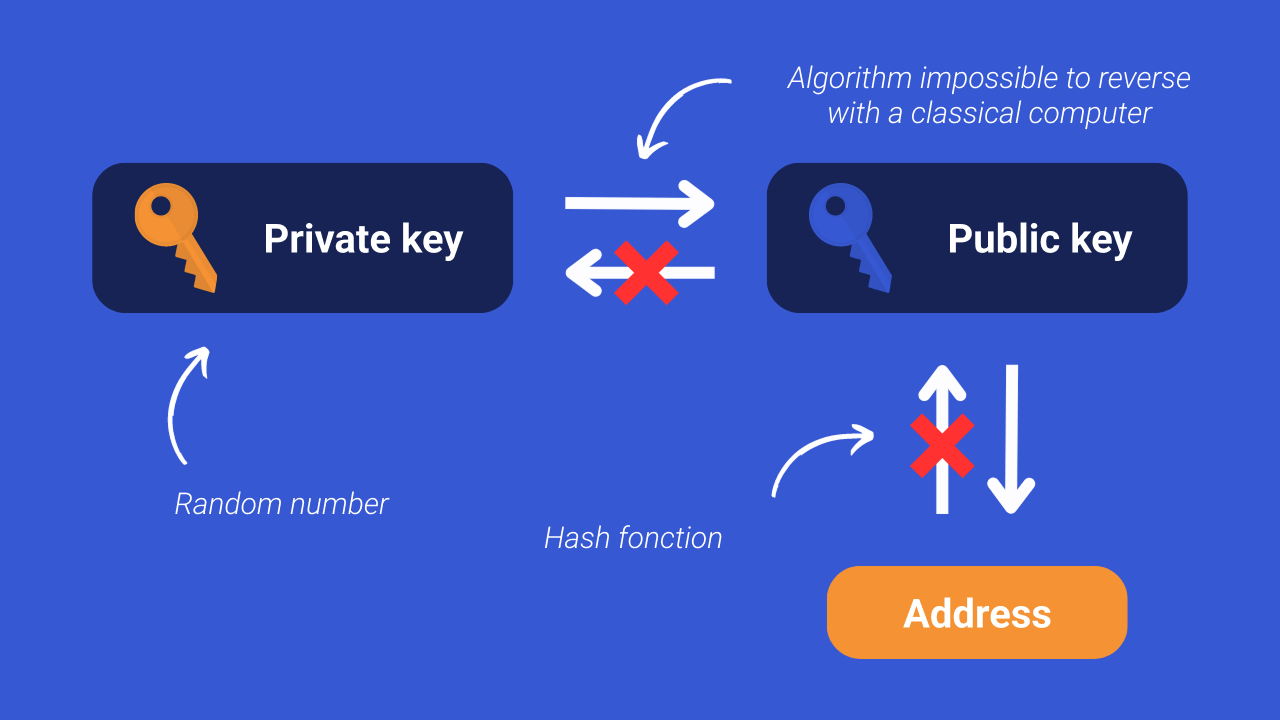
What is called a wallet, or a “wallet” in English, is a software that makes it easy to generate, store, and use cryptographic keys. They can be classified into two distinct categories:
Hot wallets are software or applications that are installed directly on a multi-purpose device connected to the internet. For example, if you use the Green Wallet on your smartphone, it's a hot wallet.
Cold wallets, also called “hardware wallets” or “hardware wallets”, are computing devices that will only serve as a cryptocurrency wallet and are not connected to the Internet. For example, if your Bitcoin wallet is on a Ledger Nano S Plus, then it's a hardware wallet.
If we use a hardware wallet rather than a hot wallet, it is to reduce the attack surface of the Bitcoin wallet. In the field of cybersecurity, this attack surface is defined as all the weak points of a system that can be exploited by attackers. The larger this area, the greater the risk of piracy. In other words, if a computer has features such as Bluetooth, an internet connection, a web browser, and various software, then hackers have a multitude of different attack vectors.

The objective of the hardware wallet is to reduce this attack surface as much as possible by removing anything that may be superfluous. Thus, the private keys stored on this type of device benefit from a high level of security, considerably reducing the risks of Bitcoin being stolen.
➤ Discover the basic principles of bitcoin self-custody.
In terms of security, hardware wallets are generally compared based on two different criteria:
For the first evaluation criterion, the objective is to measure how effectively the hardware wallet maintains a strict separation from other multi-purpose devices during its use. Indeed, the hardware wallet needs to communicate with a portfolio management software such as Sparrow or Ledger Live. This software is located on a computer connected to the Internet since it is necessary to be able to broadcast the Bitcoin transaction once it is signed by the hardware wallet. The computer then has an immensely large software attack surface compared to the hardware wallet.
For greater security, it is recommended to opt for devices that offer indirect communication methods, commonly called “Air-gap”. These can be implemented using a camera and QR codes, or via a micro SD card. Conversely, direct means of communication, such as NFC, Bluetooth, or cable connections, offer fewer security guarantees. The aim is to segregate the risks associated with the computer's vast attack surface, while limiting as much as possible the possibilities of transferring these risks between the computer and the hardware wallet.
For the second criterion, we will judge how well the hardware wallet itself is protected against physical attacks. In other words, if an attacker seizes your hardware wallet, how complex would it be for him to extract your private keys, and thus access your bitcoins? This question usually boils down to whether the hardware wallet has a secure element or not. It is an electronic component specifically designed to store and handle your private keys securely. A secure element has physical security measures to protect your private keys from unauthorized access.
Today, there are a multitude of different hardware wallets. To choose the one that is best for you, there are several criteria to consider:
Let's take a look at what exists today on the Bitcoin hardware wallet market.
La Nano S Plus is a small hardware wallet designed by the French unicorn Ledger. This company is a leader in the hardware wallet market with already more than 6 million devices sold worldwide.
The Nano S Plus benefits from a secure element certified EAL5+ by ANSSI. It is one of the best hardware wallets on the market in terms of physical security. In addition, the device screen and navigation buttons are controlled directly by the secure chip. However, its firmware is not open-source and it does not support air-GAP communications. The Nano S Plus is still a good solution for beginners.
Personally, I particularly like the fact that Ledger is always among the first to implement Bitcoin's new features. This was the case for Taproot in 2021 or even for Miniscript at the beginning of this year 2023.
✅ Secure item
❌ Open source
❌ Micro SD
❌ Camera
❌ Battery
💶 €79
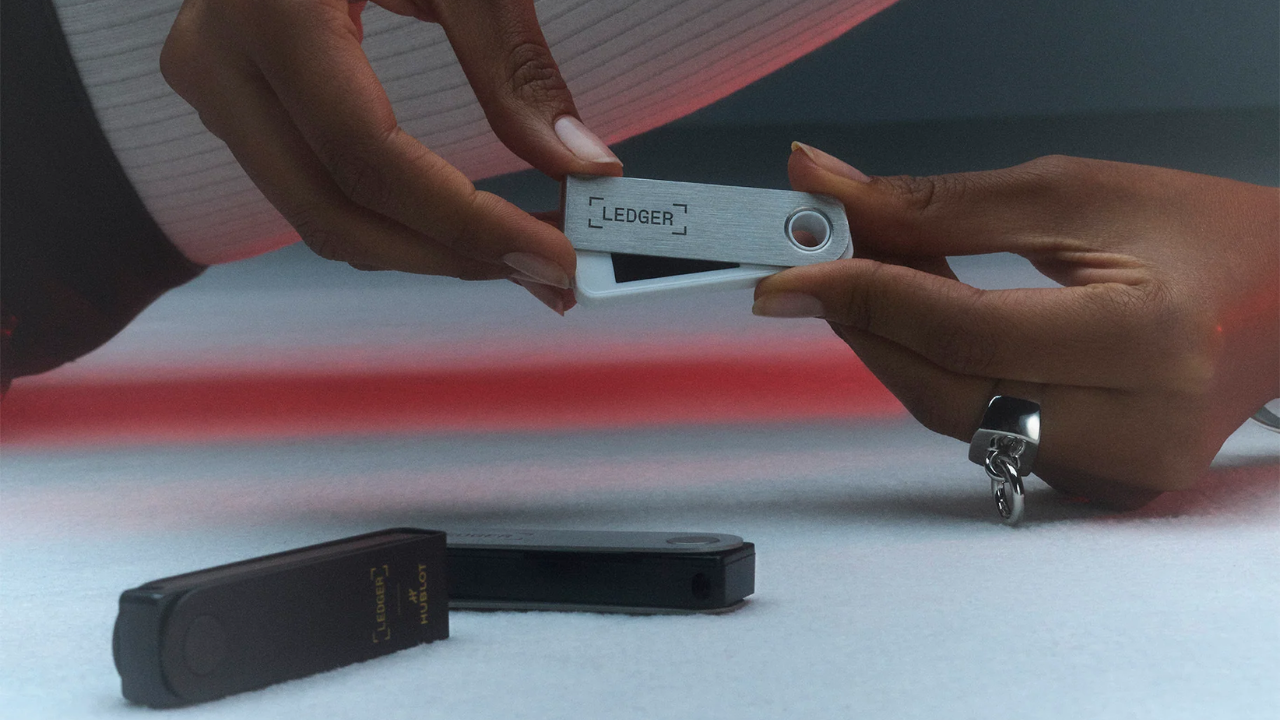
Credit: https://shop.ledger.com/fr/pages/ledger-nano-s-plus
➤ Check out our comprehensive guide to setting up and using the Ledger Nano S Plus.
La Trezor Model One is produced by Satoshi Labs. Prototyped in 2012, then delivered from 2014, it is the very first hardware wallet designed for the general public.
The advantages of Model One are that it is completely open-source and that Bitcoin-only firmware can be installed. On the other hand, it does not have a secure chip. It is then much more sensitive to physical attacks. However, this type of risk can be mitigated through the use of a BIP39 passphrase. If your budget is tight, opting for a Trezor Model One with a strong passphrase can be a very good security option.
❌ Secure item
✅ Open source
❌ Micro SD
❌ Camera
❌ Battery
💶 €69
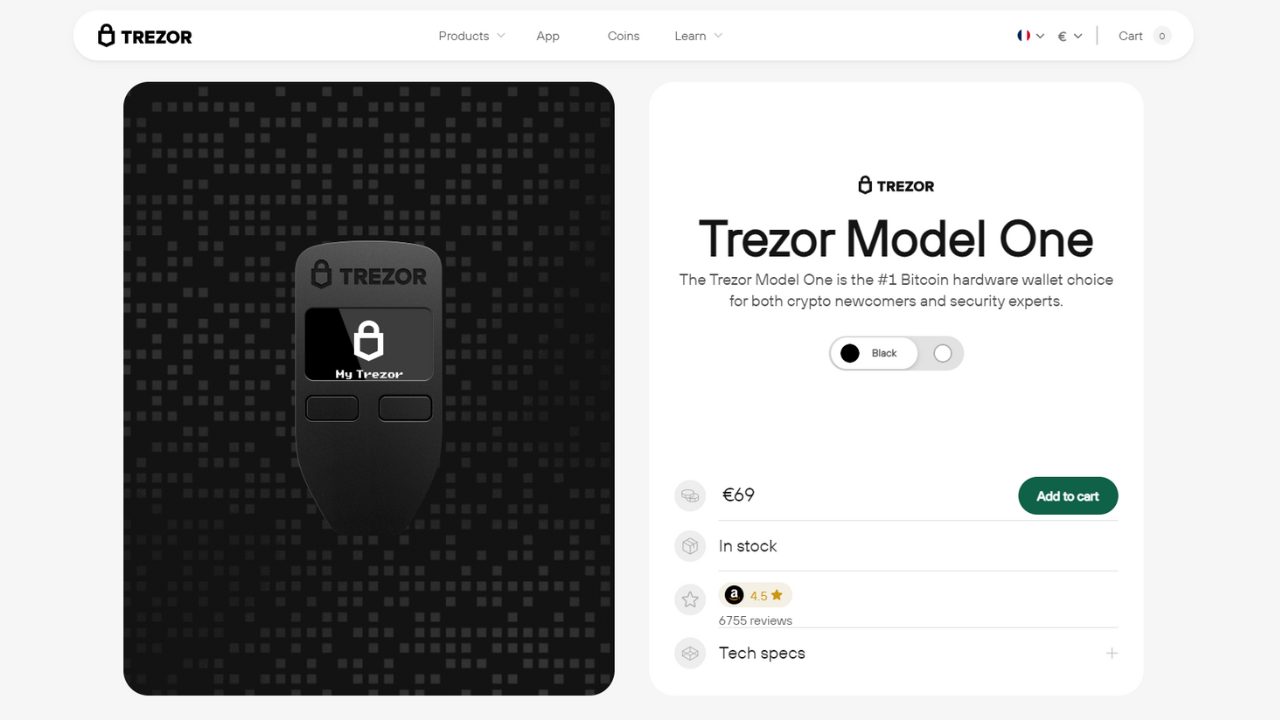
Credit: https://trezor.io/trezor-model-one
➤ Learn more about the BIP39 passphrase.
The hardware wallet Jade is produced by the company Blockstream, run by the famous cryptographer Adam Back (the inventor of Proof-of-Work). It is a Bitcoin-only device that can be purchased already assembled, or built by yourself on a microcomputer like an ESP32.
The Jade is entirely open-source and has a camera to carry out Air-gap transactions. It doesn't have a secure element, but the wallet seed is never saved on the device. This helps to mitigate the risks of physical attacks.
❌ Only a secure “virtual” element
✅ Open source
❌ Micro SD
✅ Camera
✅ Battery
💶 $64.99 USD
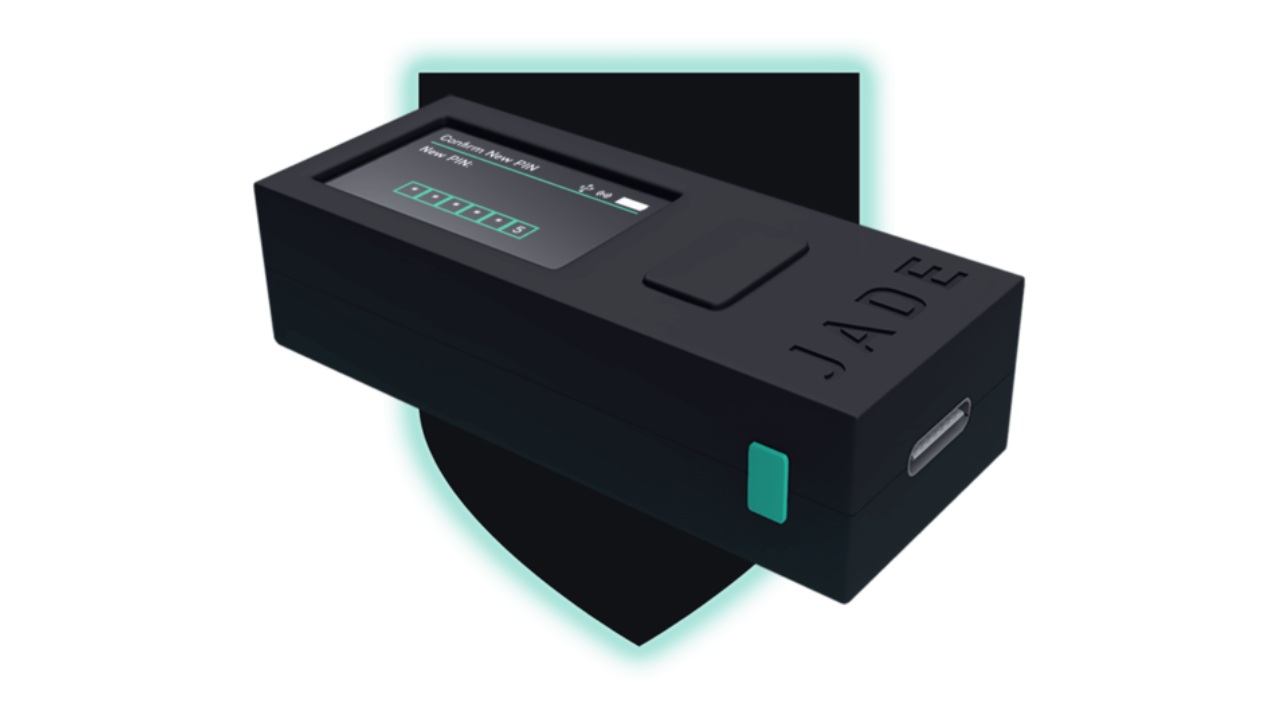
Credit: https://blockstream.com/jade/
La BitBox02 is a high-end hardware wallet designed by the Swiss company Shift Crypto. It exists in a Bitcoin-only version, or in a version that supports various cryptocurrencies.
These devices are completely open-source. They have two electronic chips, one of which is a secure element. The BitBox02 is very compact, but it is still very easy to use thanks to its touch sensors. It has plenty of options to improve the security of your Bitcoin wallet.
Unfortunately, the BitBox does not have an option for making Air-GAP transactions. You must connect your device to a computer or smartphone to use it.
✅ Secure item
✅ Open source
❌ Micro SD (not for air-GAP transactions)
❌ Camera
❌ Battery
💶 €139
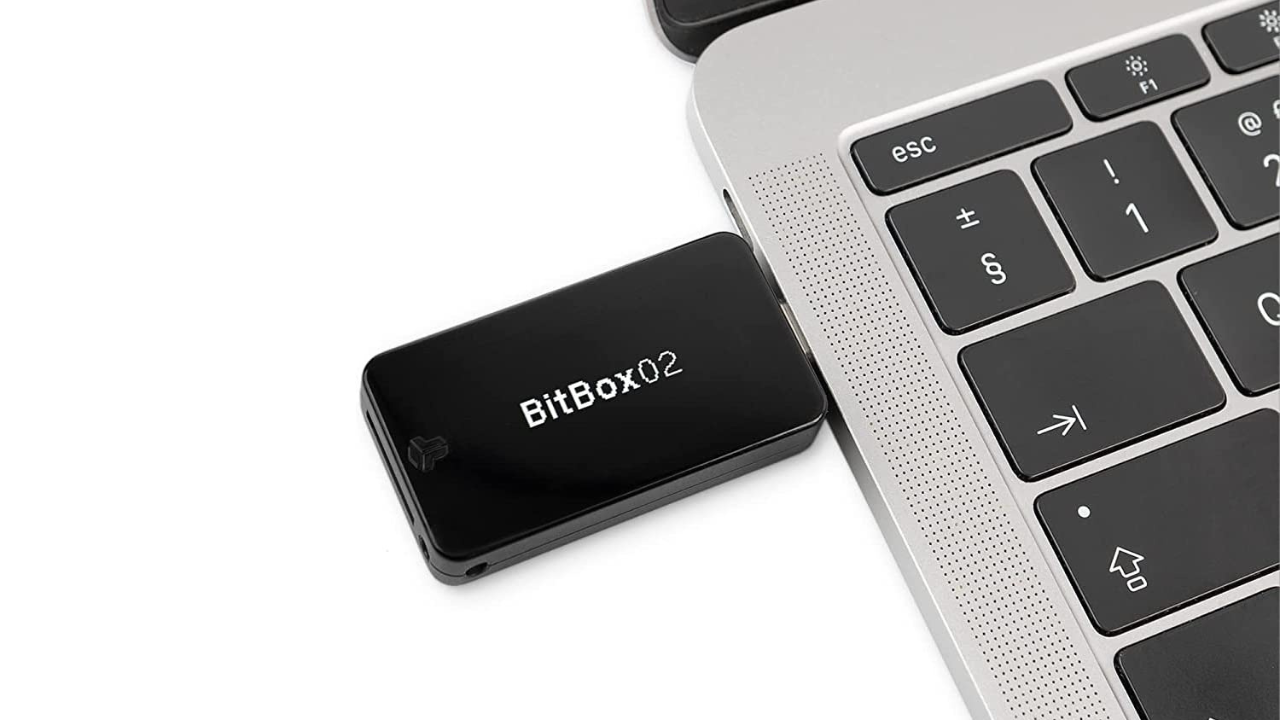
Credit: https://bitbox.swiss/
Les Coldcard hardware wallets by the Canadian company Coinkite are often very popular with bitcoiners. The MK4, which looks like a small pocket calculator, is a concentrate of technologies. It has two secure chips. Its code is not really open-source, but only searchable. It can be used to sign transactions in an Air-gap way using a micro SD.
Coldcards benefit from a multitude of advanced security options:
All of Coinkite's devices are Bitcoin-only. Compared to its predecessors, the MK4 has an NFC option. It also has more memory to be able to sign large Bitcoin transactions.
Coldcards are among the best in terms of Bitcoin hardware wallets. However, handling them is quite complex. They are not suitable for beginners, unless you are ready to take the time necessary to understand how they work.
✅ Secure item
✅ Verifiable source code
✅ Micro SD
❌ Camera
❌ Battery
💶 $157.94 USD
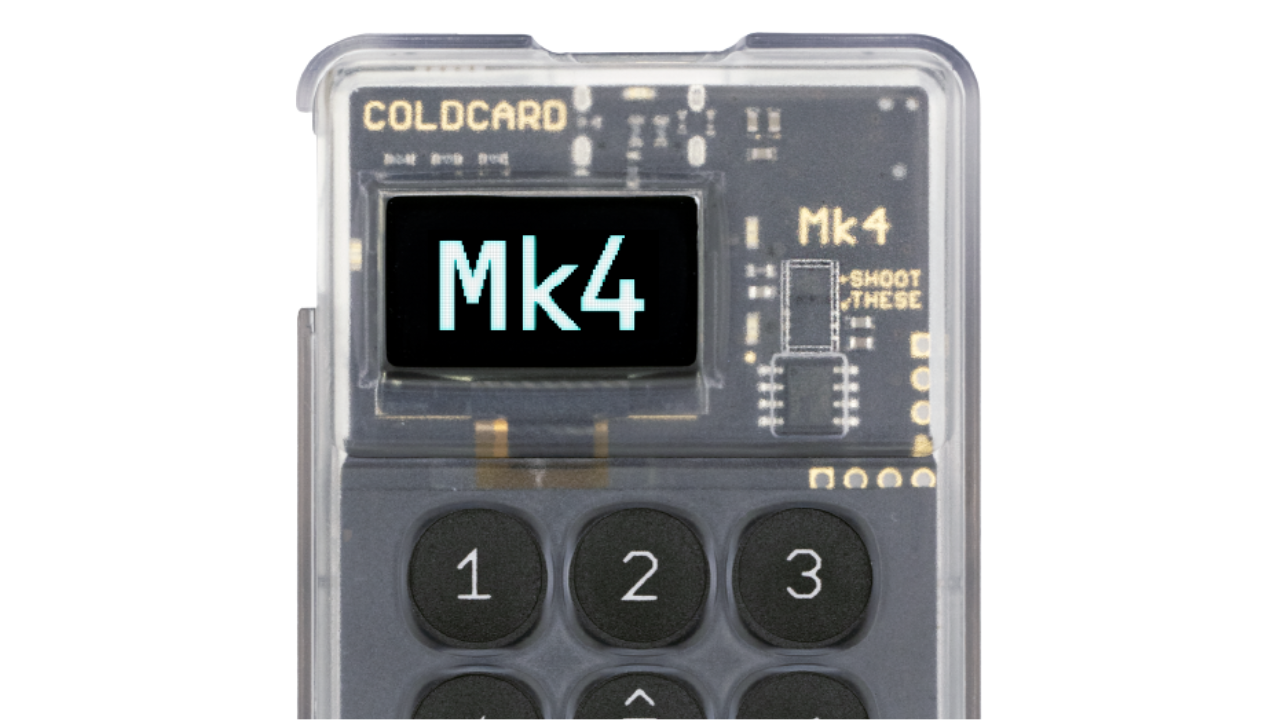
Credit: https://store.coinkite.com/store/coldcard
La Coldcard Q1 is the latest hardware wallet announced by Coinkite. It's essentially like an MK4, but with a lot more ease of use. It has an entire keyboard to be able to navigate the interfaces more easily. In particular, this keyboard is very useful for entering long BIP39 passphrases.
It also has a large LCD screen, two micro SD ports and a camera to read QR codes. The Coldcard Q1 works on batteries, which allows the wallet to be strictly segregated.
This device is only available for pre-order at this time.
✅ Secure item
✅ Verifiable source code
✅ Micro SD
✅ Camera
✅ Battery (batteries)
💶 $199.99 USD
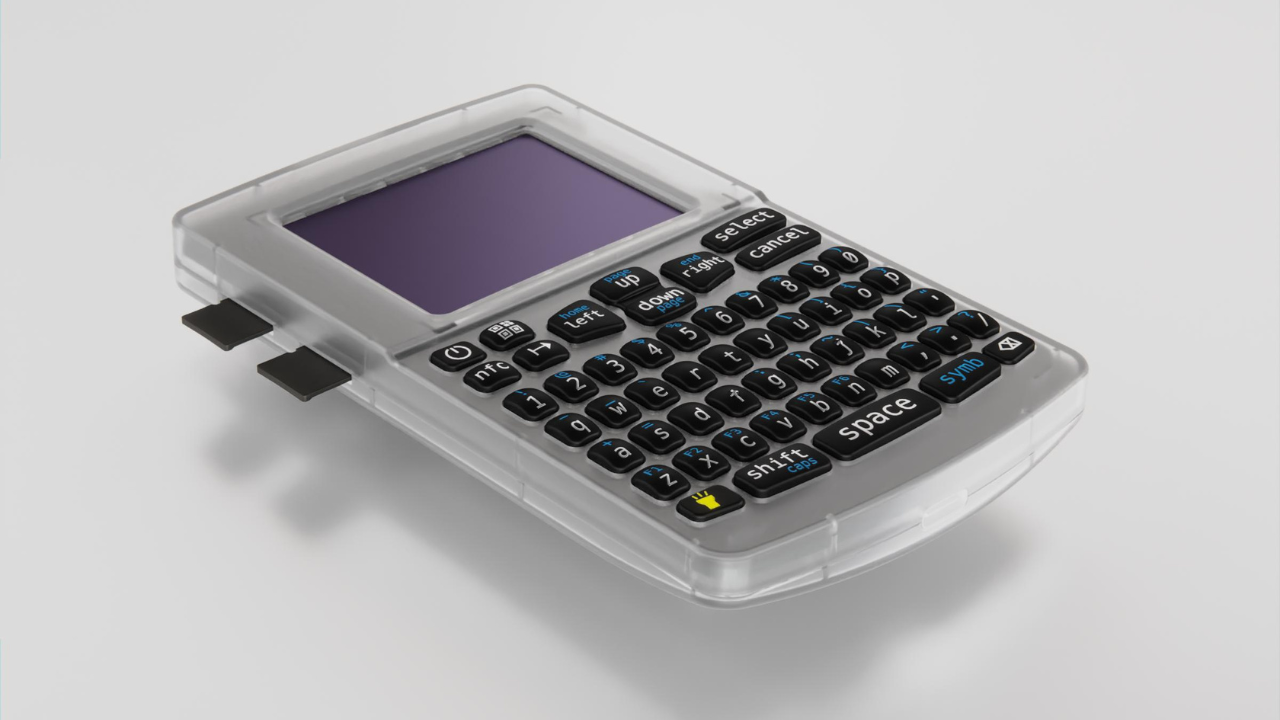
Credit: https://coldcard.com/docs/coldcard-q1
The Passport V2 is a high-end hardware wallet designed by the American company Foundation. This device is quite expensive, especially when you include the price of delivery in France (40 dollars). On the other hand, among all the hardware wallets mentioned in this article, it is certainly the one with the most beautiful finish.
It has a secure chip and its code is entirely open-source. It supports advanced security options, but doesn't have the many Coldcard options. Its integrated camera allows transactions to be signed in an Air-gap manner.
In terms of design, the Passport V2 is a success. The user experience is also very pleasant with its large high definition color screen. The operating system is easy to use. This complete device can be suitable for beginners as well as for the more experienced.
✅ Secure item
✅ Open source
✅ Micro SD
✅ Camera
✅ Battery (removable)
💶 $199 USD
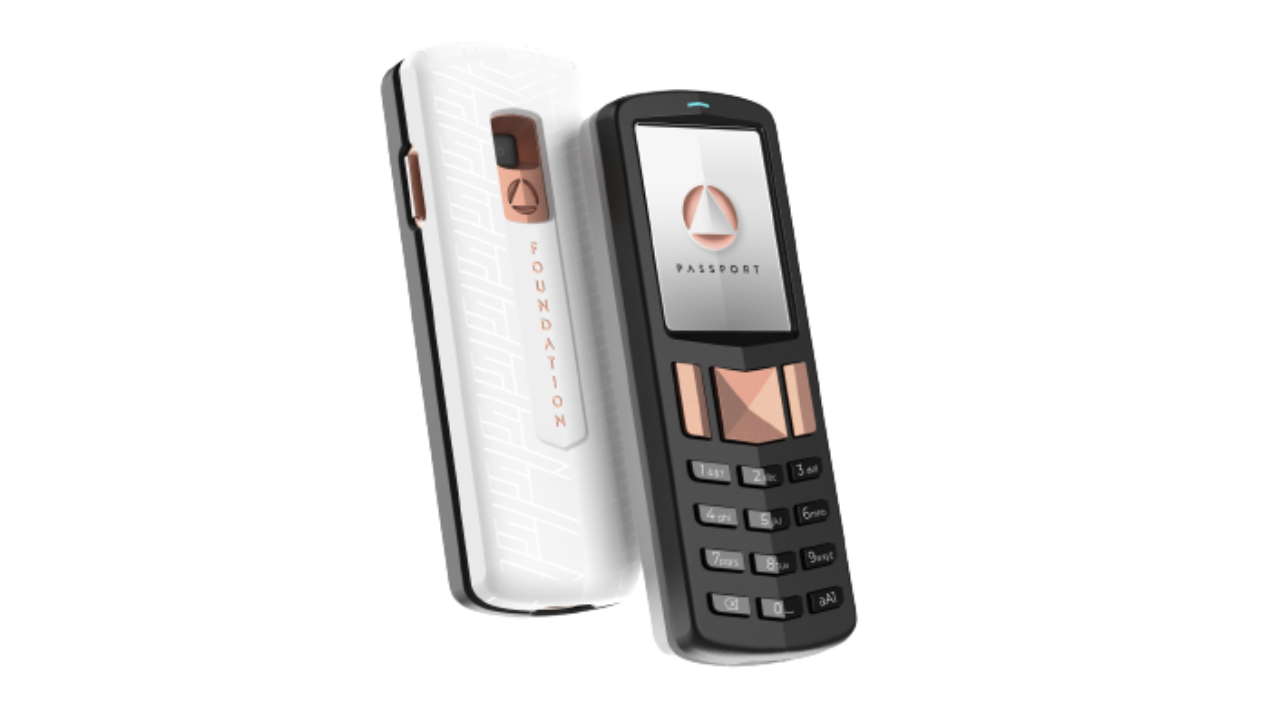
Credit: https://foundationdevices.com/passport/
The Satoship is a hardware wallet that takes the form of a small card with an EAL6+ certified secure chip. It looks like a bank card. This device is used with a smart card reader that can be found for around ten euros.
This hardware wallet is interesting because it has a secure chip, it is entirely open-source and its price is very reasonable. Its main disadvantage is that it does not have a screen, unlike the other devices discussed in this article. It therefore does not make it possible to deal with “Address Swapping” attacks.
✅ Secure item
✅ Open source
❌ Micro SD
❌ Camera
❌ Battery
💶 €25
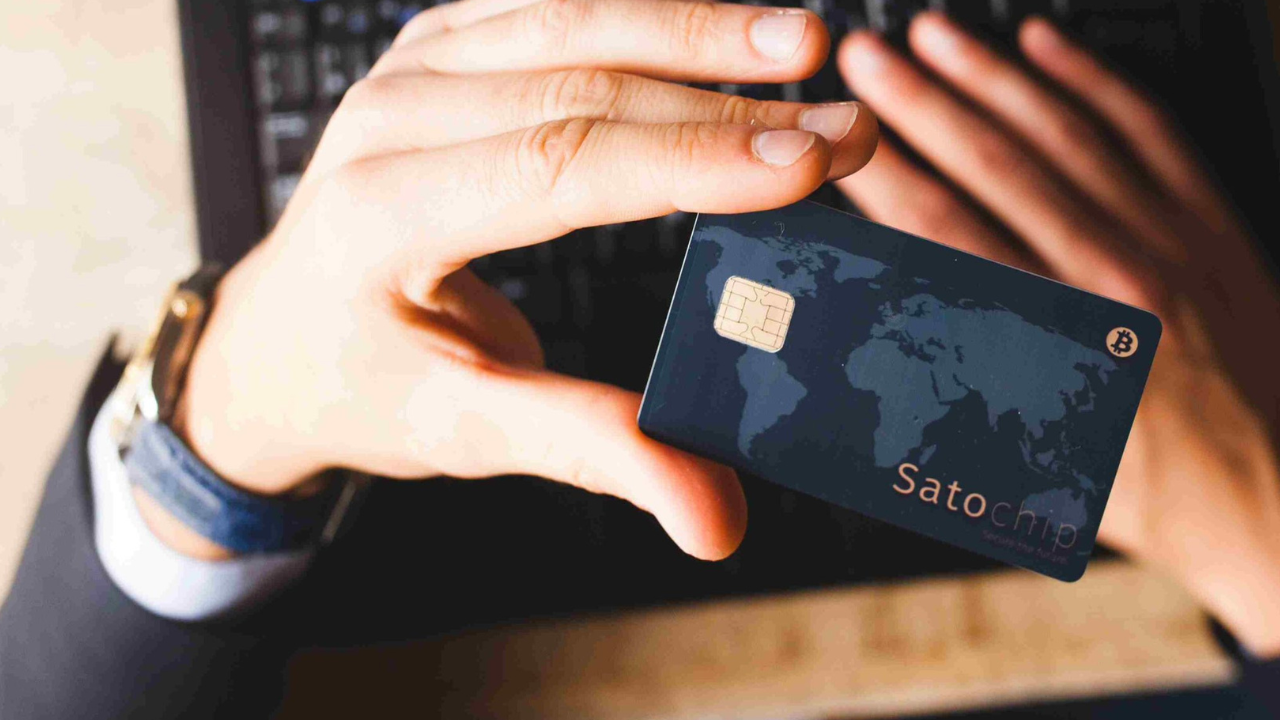
Credit: https://satochip.io/
SeedSigner is an open-source software that can be installed on a Raspberry Pi Zero microcomputer in order to make it a hardware wallet. Thanks to a camera on the Raspberry Pi, you can use your SeedSigner to sign Bitcoin transactions in an Air-gap way.
Obviously, this type of computer hardware does not have a secure chip. However, the SeedSigner does not remember the wallet seed. This helps to mitigate the risks of physical attacks.
The SeedSigner software is very complete in terms of options and easy to use. The most complex part is assembling the device and installing the software, but it's still accessible.
❌ Secure item
✅ Open source
❌ Micro SD (not for air-GAP transactions)
✅ Camera
❌ Battery
💶 Between €30 and €50 For hardware
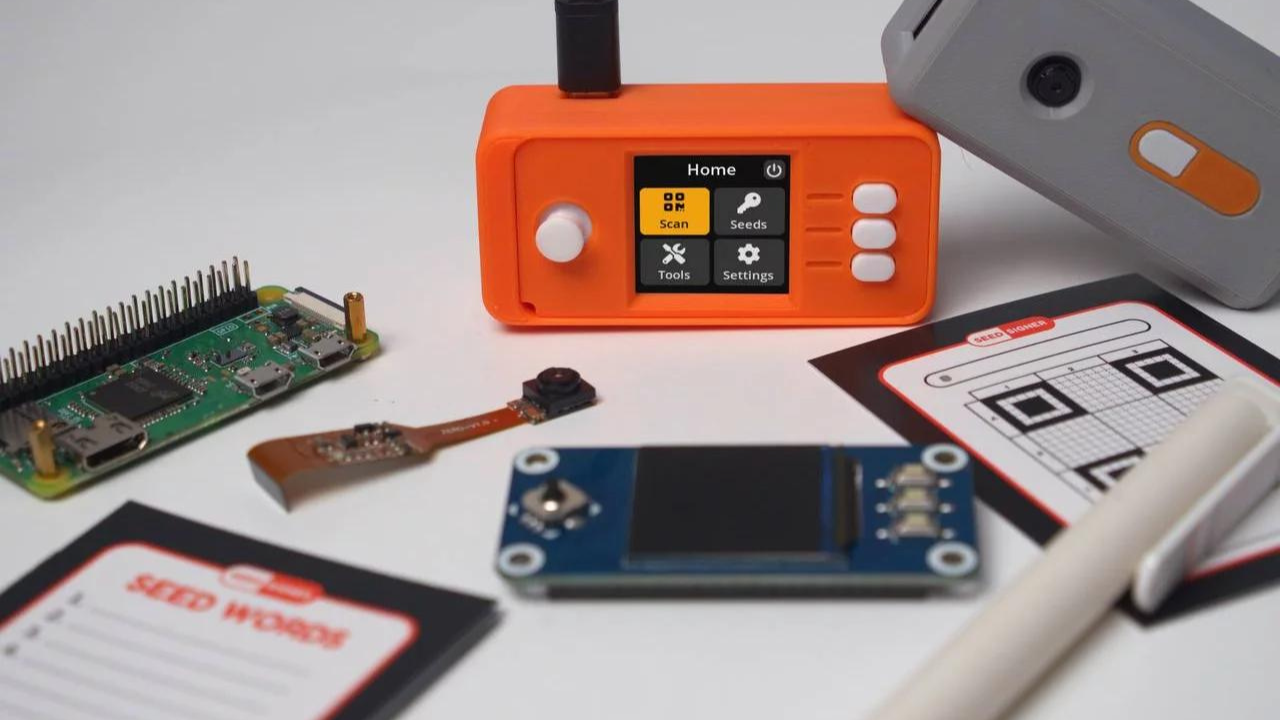
Credit: SeedSigner
Alternative to SeedSigner, Specter DIY software also allows you to build your own hardware wallet on general computer hardware. Its characteristics are similar to those of the SeedSigner.
❌ Secure item
✅ Open source
❌ Micro SD (not for transactions)
✅ Camera
❌ Battery
💶 Between €70 and 110€ For hardware
Beyond all these solutions, it is obviously possible to build your own hardware wallet. For example, some bitcoiners simply use a smartphone that is completely disconnected from the internet and mobile networks. You can transmit the APK of a wallet software there, and use it only to sign transactions, in the same way as with a hardware wallet.
This type of solution makes it possible to maintain a good segregation of the portfolio. The advantage of using a simple smartphone is that it reduces the likelihood that it will be detected and identified as a Bitcoin wallet. On the other hand, this type of device is less resistant to physical attacks.
❌ Secure item
✅ Open source
❌ Micro SD
✅ Camera
✅ Battery
💶 Phone price
A hardware wallet is a computer device whose role is to store and use the private keys of a Bitcoin wallet. It is not connected to the Internet and thus has a minimal attack surface. This reduces the various risks of theft of your private keys giving access to your bitcoins.
The different models of hardware wallets are compared according to two axes: their resistance to software attacks and their resistance to physical attacks.
As you can see, there is no perfect hardware wallet. Everyone has their own disadvantages. It is therefore important to identify your risk model in order to identify the devices that best suit you. The weaknesses of some devices can also be mitigated using additional software options like a BIP39 passphrase.
Finally, to eliminate the risks specific to each hardware wallet, it may be interesting to create a multi-signature wallet with several different models. This type of arrangement is very consistent when you want to secure large amounts of bitcoin.




